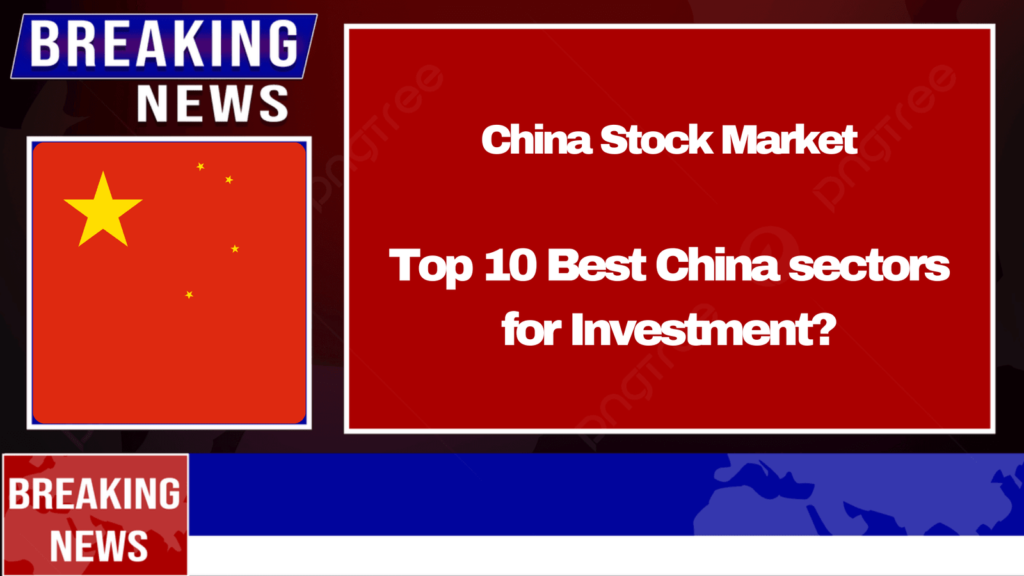Top 10 Best China sectors for Investment: Here are some of the best sectors in China that present attractive investment opportunities due to their growth potential and alignment with the country’s long-term economic plans:
Top 10 Best China Sectors Stocks
1. Technology
China’s technology sector is one of the most dynamic and fastest-growing industries in the country. With major players like Alibaba, Tencent, Baidu, and JD.com, China is leading in areas such as e-commerce, artificial intelligence (AI), cloud computing, and fintech. China’s efforts to become a tech superpower, backed by significant government investment, make this sector a top choice for long-term growth. Key trends driving this sector include:
- 5G rollout and advancements in telecommunications
- Growth in AI, machine learning, and automation
- Expansion of digital services like mobile payments and e-commerce
2. Consumer Discretionary
China’s rapidly growing middle class and increasing disposable income levels are driving demand for consumer discretionary products, which include goods and services that are non-essential but desirable. The rise of e-commerce and the shift towards premium brands have fueled growth in sectors like:
- Retail and e-commerce (with companies like Alibaba and Pinduoduo leading)
- Automotive (including the electric vehicle segment, with companies like NIO and BYD)
- Tourism, luxury goods, and entertainment
3. Healthcare
China’s healthcare sector is expanding rapidly, driven by an aging population, government reforms, and increased healthcare spending. As China’s population ages and demands better healthcare services, this sector is expected to continue growing for the foreseeable future. Key growth drivers include:
- Investment in pharmaceuticals and biotechnology
- Rising demand for healthcare services and medical devices
- Digital health solutions, such as telemedicine and online health platforms
4. Renewable Energy and Clean Technology
China is making significant strides in its transition towards clean energy and sustainability. As the world’s largest energy consumer, China is leading the push for renewable energy sources, especially in solar, wind, and hydroelectric power. The country is also home to some of the largest producers of solar panels and electric vehicles. Key sub-sectors include:
- Electric vehicles (EVs), with companies like BYD and NIO at the forefront
- Solar and wind energy production and infrastructure
- Battery technology and energy storage solutions
Also Read: China Stock Market: Top 10 Best China Stocks to Buy Now for Investment
5. Financial Services
China’s financial sector is undergoing rapid transformation, with increasing urbanization, rising incomes, and government reforms driving demand for banking, insurance, and wealth management services. The growth of fintech companies, mobile payments, and digital banking is also reshaping this sector. Key segments include:
- Insurance, as China’s population seeks greater financial security
- Wealth management and investment services
- Expansion of digital banking and mobile payments, led by companies like Ant Financial and Tencent
6. Electric Vehicles (EVs)
China is the world’s largest market for electric vehicles, driven by government incentives and regulations aimed at reducing carbon emissions and promoting sustainability. Major companies like BYD, NIO, and Xpeng Motors are leading the charge in EV manufacturing. The EV sector includes:
- Battery production and innovation
- Charging infrastructure
- Government policies aimed at supporting electric vehicle adoption
7. Real Estate and Infrastructure
Despite concerns over a slowdown in the real estate market, China’s urbanization and infrastructure development continue to provide investment opportunities. The government’s focus on infrastructure development, including transportation, urban development, and smart cities, offers growth potential for companies involved in construction and real estate.
- Urbanization and residential development
- Growth in commercial real estate and office spaces
- Government projects in infrastructure and transportation
8. Industrials and Manufacturing
China remains the “world’s factory,” and its industrial and manufacturing sector continues to play a crucial role in the global supply chain. With advancements in automation and robotics, this sector is shifting towards higher-value production. Key drivers include:
- Growth in automation, robotics, and advanced manufacturing technologies
- Increasing demand for machinery and construction equipment
- Government investment in upgrading industrial capabilities
9. E-Commerce
China’s e-commerce sector is the largest in the world, driven by a tech-savvy population and widespread adoption of mobile payments. Companies like Alibaba, JD.com, and Pinduoduo dominate this space, offering everything from consumer goods to groceries. Growth in this sector is fueled by:
- Increased online shopping demand, especially after COVID-19
- Expansion into rural markets
- Rising demand for cross-border e-commerce
10. Education and Training
As the demand for higher-quality education grows in China, there is increasing investment in education technology, online learning, and private tutoring. The government is also focused on improving educational standards, which has led to growth in companies providing test preparation, language training, and skills development programs.
- Growth in online education platforms and EdTech startups
- Rising demand for private tutoring services
- Expansion in vocational and skills-based training
Conclusion
These sectors represent the best growth opportunities in China, driven by the country’s structural reforms, demographic trends, and technological advancements. Investing in these sectors can offer substantial long-term returns, but it’s important to consider the risks and volatility associated with China’s evolving regulatory environment and market dynamics. For diversified exposure, investors can consider ETFs or mutual funds that focus on these key sectors.


